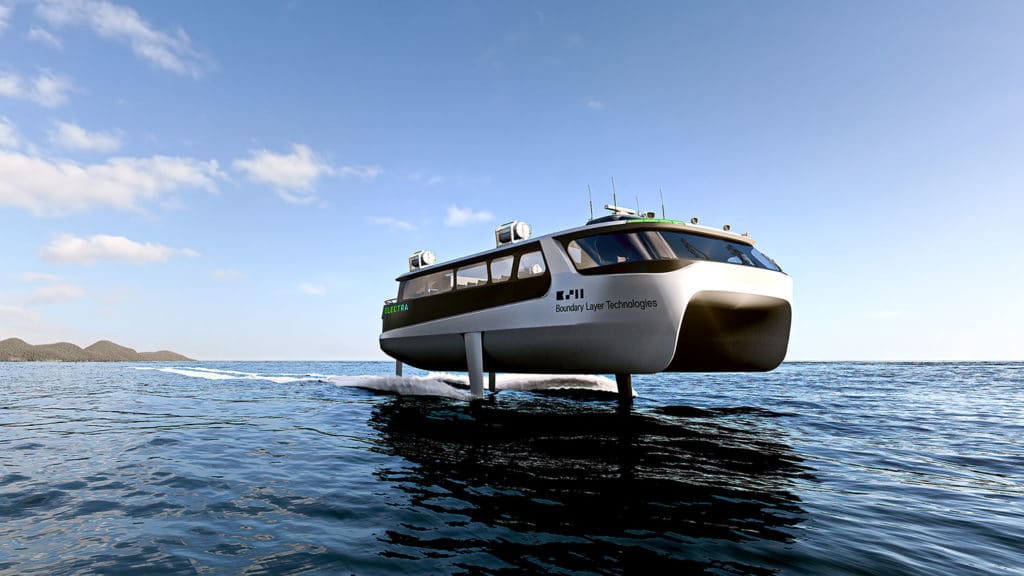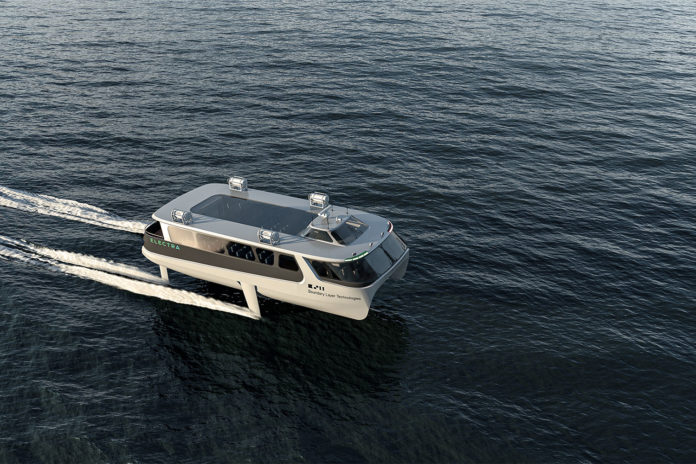Boundary Layer Technologies, a California-based marine technology startup, has launched the design concept of its first fully electric hydrofoil ferry, claimed to be the fastest, longest-range one in the world. The company emphasizes that the revolutionary design will make it possible to deliver twice the speed and range of existing electric ferries.
Dubbed ELECTRA, the electric hydrofoil ferry has a range of up to 100 nautical miles (185 km) and a cruise speed of 40 knots (74 km/h), thanks to Boundary Layer Technology’s proprietary hydrofoil technology and podded propulsion system. According to the company, ELECTRA’s cutting-edge hydrofoil technology dramatically reduces hydrodynamic drag, allowing for a high-speed electric ferry whilst also increasing its range to up to 100NM. With this range, ELECTRA is able to cover far-reaching routes, such as servicing 48% of the ferry routes in the Greek region.

The 150 passenger ferry features a 9000 kWh battery capacity that can be fully charged in less than 3 hours, using a 2400kW charging system. The electric hydrofoil ferry’s battery-electric propulsion significantly reduces cabin noise by up to 20dB compared to conventional ferries. Its foiling system also offers excellent seakeeping and ride comfort.
ELECTRA’s foils feature a very small frontal area which greatly reduces the probability of debris impact. In addition, ELECTRA is equipped with forwarding scanning SONAR and computerized object detection and avoidance system that can detect submerged objects at a range of up to 1000m.
In addition to speed, increased battery life, and reduced noise, ELECTRA also offers OPEX reductions of up to 35% compared to fossil fuel-burning fast ferry alternatives, as well as helps operators de-risk the future cost uncertainties of carbon taxes and emissions trading schemes being implemented globally.
The company has already developed the hydrofoil and control systems required for ELECTRA and plans to have the first vessels in operation by the first quarter of 2024 in regions such as the United States, Scandinavia, and the Mediterranean.
